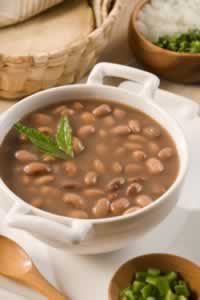Epazote Chenopodium ambrosioides
- Common Names
- Epazote , Wormseed, Jesuit's Tea, Mexican Tea, Herba Sancti Mariæ
- Botanical Name
- Chenopodium ambrosioides
- Syn. Dysphania ambrosioides
- Family
- AMARANTHACEAE
Medicinal Uses & Benefits of Epazote
![]() How to Use|
Side Effects |
Plant & Garden|
How to Use|
Side Effects |
Plant & Garden|
- Medicinal Uses: * Culinary/Kitchen
* Digestion
* Parasites/worms
* South_American
- Properties: * Analgesic * Antiparasite * Carminative * Diaphoretic * Diuretic * Emmenagogue * Vermifuge
- Parts Used: Leafy parts
- Constituents: essential oil : ascaridole (up to 70%), limonene, p-cymene (a-pinene, myrcene, terpinene, thymol, camphor and trans-isocarveol
How to Use: Epazote
The use of epazote can be traced back to the Aztecs. Epazote contains an essential oil which is up to 70% ascaridole, which gives it a similar character to boldo, another leafy, pungent herb consumed in South Amercian folk medicine as a digestive tea. The common name, wormseed, indicates one of epazote's common medicinal uses, to kill intestinal worms.2
Oil of chenopodium, the essential oil derived from the plant was official in the United States Pharmacopoeia as a vermifuge for many years, but safer alternatives have been developed, and it is no longer recommended for this use. This oil is not used in aromatherapy, it is toxic.
Preparation Methods & Dosage :Used in teas and cooking especially bean dishes.
 In the Kitchen: Epazote is a herb used in traditional Mexican cooking for its pungent flavor, and is often used to flavor beans.
In the Kitchen: Epazote is a herb used in traditional Mexican cooking for its pungent flavor, and is often used to flavor beans.
Epazote Side Effects: A great many sources say that it is poisonous in large quantities, but no one can quite define what amount "large" constitutes. Normal amounts used in cooking, and whole herb teas have no reported side effects, but the herb is listed as an emmenagogue, so use in pregnancy should be avoided. Wormseed oil is toxic. 2
Plant Description

Robert H. Mohlenbrock @ USDA-NRCS
- Flowers/Fruit/Seeds:Small, green flowers in panicle at the end of the stems
- Plant Class:Tender perennial/annual herb
- Rhizome:
- Leaves/Stem:grows up to 4 ft in height,irregularly branched, leaves are oblong, lanceolate
- Preferred Habitat:
- Flowering Season:Summer
- Distribution:Native to Central America, South America, and southern Mexico, grows in warm, temperate regions
Regional Traditions :Central and South America *
How to Grow Epazote
Press seed on surface of sandy soil and keep moist until germination. Desert type plant needs full sun and does well in waste ground.
History and Traditions & Folklore
Other nonaromatic Chennpodium species have a long history as food plants. Seeds of C.album (fat hen, pigweed) were found in the stomach of Tollund man. (100BC).1 The Aztecs used epazote as a culinary herb.- Deni Brown HSA Encyclopedia of Herbs & Their Uses, Pub. Dorling Kindersley (1995)












